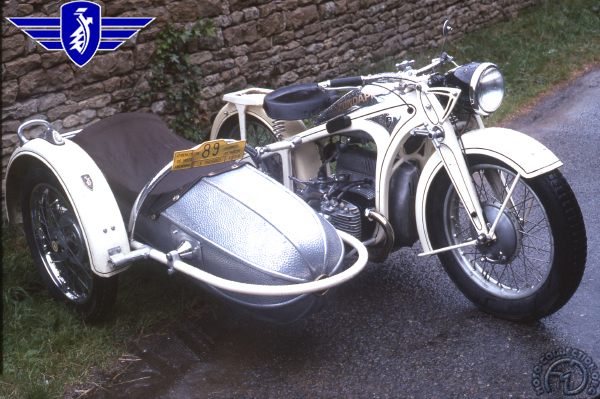
Photo ou archives : F-M. Dumas
2804
ZÜNDAPP
K800 / With Steib Sidecar - 1938
Four-cylinder flagship
The German motorcycle industry was scarcely through the economic crisis of the early 1930s when Zündapp created its new "K" series. "K" stood for "Küchen," since the famed Richard and Xaver Küchen had designed the entire range, from the 175 twostroke to the 800 four-cylinder via the 200 and 350 two-strokes and the 500 and 600 flattwins.
K for Küchen
Richard laid out the broad concepts while Xaver translated these ideas into detailed drawings. The K800 was the flagship of the range. Its flat-four engine layout was highly fashionable at the time. The Küchen brothers' creations had several distinctive features, like their all-chain "gearbox" that enabled speeds to be shifted in silence.
Bad Time for Touring
Launched at a competitive price, but less powerful than the 500 and 600 twins, the K800 had relatively few examples built. Since it was not really the right time for a grand touring motorcycle, the K800 was dropped in 1938. It was the K Series that really put the Zündapp marque on the map. It took only five percent of the German market in 1933. This increased to 16 percent in 1935, and by 1936 it was nudging at 18 percent. The consolidation of this larger share before the outbreak of war enabled Zündapp to become alongside BMW official supplier to the Wehrmacht (German army).
SPECIFICATIONS
Engine: 797cc (62x66 mm) air-cooled flat-four four-stroke
Power Rating: 22 hp @ 4300 rpm
Valves: side-valve
Fuel System: carburetor
Transmission: 4-speed, shaft final drive
Suspension: girder forks (front); rigid (rear)
Brakes: drum (front & rear)
Wheels: 3.50x19 inch wire (front & rear)
Weight: 441 lb
Maximum Speed: 78 mph
Here fitted with a stylish Steib sidecar finished in hammered metal, the K800 was the flagship model of the Zündapp range in the late 1930s.